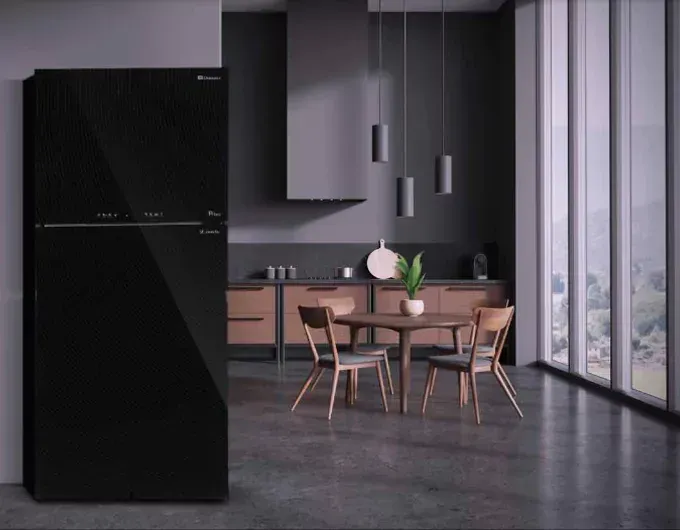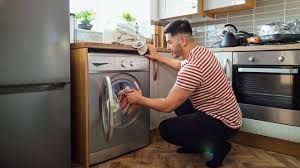Most Asked Questions About LG Refrigerator Repair
Q: Why is my LG refrigerator not cooling properly?
A: If your LG refrigerator is not cooling properly, several potential issues could be the cause. Common reasons include dirty condenser coils, a malfunctioning evaporator fan, or a faulty thermostat. Start by cleaning the condenser coils, as accumulated dust and debris can hinder the cooling efficiency. If the coils are clean, check if the evaporator fan is running; if not, it may need to be replaced. Additionally, a defective thermostat may fail to regulate the temperature correctly. If these solutions do not resolve the issue, it may be necessary to contact a professional technician for further diagnosis and repair.
Q: What should I do if my LG refrigerator is making loud noises?
A: Loud noises from an LG refrigerator can stem from several sources. Common culprits include the condenser fan motor, evaporator fan motor, or the compressor. To diagnose the problem, start by identifying the location of the noise. If it is coming from the back, the condenser fan motor might need cleaning or replacement. Noises from inside the fridge could indicate issues with the evaporator fan motor. If the noise is near the bottom and consistent, the compressor might be the cause, which usually requires professional attention. Regular maintenance and cleaning can help prevent such issues.
Q: Why is my LG refrigerator leaking water?
A: Water leakage from an LG refrigerator can be caused by several factors. The most common reason is a blocked defrost drain, which can occur due to food particles or ice buildup. Clearing the blockage can often resolve the issue. Another possibility is a malfunctioning water inlet valve, especially if your refrigerator has a water dispenser or ice maker. Additionally, check the door seals for any damage or gaps that could allow warm air to enter, causing condensation and leaks. Regular maintenance and ensuring proper sealing can help prevent water leakage problems.
Q: How can I reset my LG refrigerator after a power outage?
A: To reset your LG refrigerator after a power outage, you typically need to perform a simple procedure. Start by unplugging the refrigerator from the power outlet and leave it unplugged for about 5 minutes. Then, plug it back in and ensure it is properly connected to the power source. This action often resets the internal control board. If the refrigerator has a reset button, refer to the user manual for specific instructions. After resetting, allow the appliance some time to stabilize and return to its normal operating temperature.
Q: What does the error code on my LG refrigerator display mean?
A: LG refrigerator error codes indicate specific issues that the appliance is experiencing. For example, an "ER IF" code typically means there is a problem with the ice maker fan, while an "ER FF" code points to an issue with the freezer fan. Refer to your refrigerator’s user manual to identify the specific error code and its meaning. Many codes can be resolved by simple troubleshooting steps, such as resetting the refrigerator or ensuring proper airflow. If the error persists, contacting LG customer support or a professional technician is recommended for further assistance.
Q: How often should I replace the water filter in my LG refrigerator?
A: It is recommended to replace the water filter in your LG refrigerator every six months, or sooner if you notice a decrease in water flow or a change in water taste. Regular replacement ensures that your water and ice remain clean and free from contaminants. Some LG refrigerator models have an indicator light that alerts you when it’s time to replace the filter. Always use genuine LG water filters to ensure compatibility and optimal performance. Following the manufacturer’s guidelines will help maintain the quality of your refrigerator’s water and ice.
Q: Why is my LG refrigerator freezing food in the fridge compartment?
A: If your LG refrigerator is freezing food in the fridge compartment, the thermostat might be set too low, causing the internal temperature to drop below optimal levels. Adjust the thermostat to a higher setting and monitor the temperature. Another potential cause could be a faulty thermistor or temperature sensor that inaccurately reads the temperature and signals the compressor to run longer than necessary. Additionally, check for blocked air vents that may restrict airflow and lead to uneven cooling. If the problem persists, professional inspection and repair may be necessary to address the underlying issue.
Q: How can I improve the energy efficiency of my LG refrigerator?
A: To improve the energy efficiency of your LG refrigerator, start by ensuring the door seals are clean and free of damage to maintain a proper seal and prevent cool air from escaping. Keep the condenser coils clean by vacuuming or brushing off any dust and debris regularly. Avoid overloading the refrigerator, as overcrowding can obstruct airflow and reduce efficiency. Set the thermostat to the recommended temperature settings (usually 37°F for the fridge and 0°F for the freezer). Additionally, place the refrigerator in a location away from direct sunlight and other heat sources to minimize external heat impact.
Q: What should I do if my LG refrigerator's ice maker is not working?
A: If your LG refrigerator’s ice maker is not working, begin by checking the water supply line to ensure it is properly connected and not kinked or blocked. Make sure the ice maker is turned on and the freezer temperature is set to an appropriate level (typically below 10°F). Inspect the ice maker’s ejector arm to ensure it is not obstructed. If the issue persists, try resetting the ice maker by turning it off for a few minutes and then turning it back on. If these steps do not resolve the problem, the ice maker assembly or water inlet valve might need to be repaired or replaced, and it may be necessary to contact a professional technician.
Q: How can I defrost my LG refrigerator quickly and safely?
A: To defrost your LG refrigerator quickly and safely, start by unplugging the appliance and removing all food items from the fridge and freezer compartments. Leave the refrigerator doors open to allow the ice to melt naturally. To speed up the process, you can place bowls of hot water inside the compartments or use a hairdryer on a low setting, keeping it at a safe distance to avoid damaging the appliance. Ensure you have towels or a pan to collect the melting water. Once the ice has melted completely, wipe down the interior surfaces with a clean cloth, plug the refrigerator back in, and allow it to reach the desired temperature before restocking it with food.
You might also like
Educational Center
Book a Service Today
We will get back to you as soon as possible
Please try again later
Quick & Reliable
We are available 24/7
About Us
Authorized Appliance is an appliance repair contractor referral service. We connect you with appliance contractor in your area. All contractors are operated independently of Authorized Appliance. It is the responsibility of each user to verify that the contractor connected with meets all licensing and insurance requirements in that jurisdiction.
All Rights Reserved - Authorized Appliance




